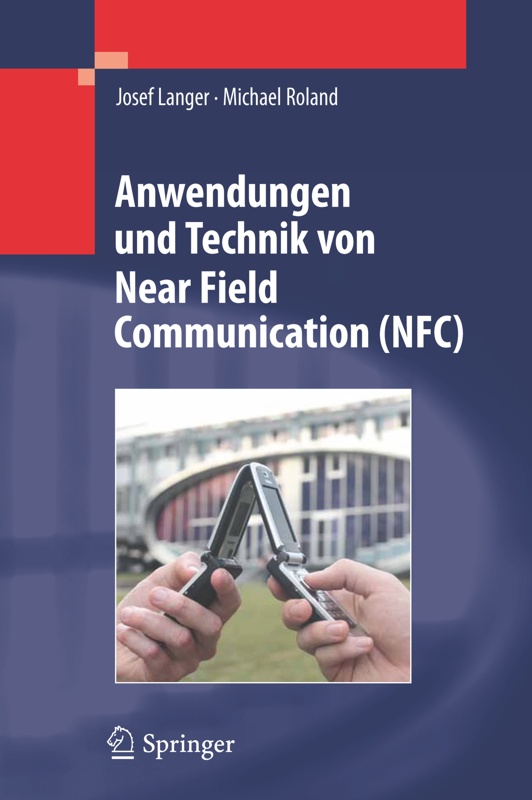Applications and Technology of Near Field Communication (NFC)

“Anwendungen und Technik von Near Field Communication (NFC)” is the first comprehensive book on Near Field Communication technology. It is published by Springer. The book is available in German.
The book gives a broad overview of the technology, its history and its applications. The technology is explained layer by layer from the basic communication principle up to the application layer protocols specified by the NFC Forum. NFC is put in the context of pre-existing smart card and RFID technology. The book puts an emphasis on the integration of NFC into mobile phones. Besides the technological aspects, the various application scenarios – from tagging to ticketing and payment – are illustrated.

From the blurb
“NFC is a systematic advancement of contactless smartcard and reader technology. The book ‘Applications and Technology of NFC’ is the standard work on NFC technology. It provides a comprehensive overview of the fundamentals, the technology and the application scenarios of NFC. It is intended as an introduction as well as a referense work for practitioners, lecturers and students.
Based on fundamental principles and the technology, the authors compare the NFC technology to classic RFID technology. The state of the art of standardization, further specifications and protocols are explained in detail with the help of numerous illustrations. Special attention is paid to the integration of NFC into mobile phones. Numerous exemplary applications (e.g. smart posters, payment, access control) provide an insight into the adoption of the technology and the ecosystem with its various applications.”
Errata
- Figure 2.12 (Section 2.3.4, p. 27): The load modulation side bands (“Hilfsträger”) are located at ±848 kHz around the carrier (as written in the legend). The scale of the x-axis (“Frequenz f”) incorrectly shows them at ±212 kHz.
- Section 3.4.1.5 (p. 50): The sentence “P3 enthält die Länge des Datenfeldes.” must be removed.
- Section 3.4.1.5 (p. 51): The header field “P3” must be removed from Figure 3.15a.
- Table 6.1 (Section 6.1, p. 110): The upper boundary of 512 MB for the memory size of a Type 4 Tag (before mapping version 3.0) was calculated under the assumption that an NDEF message can be spread across multiple NDEF files. As this is not the case, only one NDEF file can be used and the theoretical upper boundary for the NDEF data size is reduced to 216 – 3 bytes. Moreover, the highest address offset for the READ BINARY APDU is 0x7FFF. Starting from that address up to 256 bytes can be read. Consequently, the number of accessible memory bytes in the NDEF file is limited to 0x7FFF + 256 – 1 = 0x80FE = 33022 bytes. Furthermore, starting with the Type 4 Tag specification version 1.0 (as opposed to the preceding Type 4 Tag Operation specifications), the NDEF message size was explicitly limited to 0x7FFD bytes (~32 KB) for mapping version 2.0. Thus, “< 512 MB” must be replaced with “< 32 KB”. Starting with mapping version 3.0, the upper bound has been increased to ~4 GB.
- Table 6.3 (Section 6.4.4, p. 127): The URI prefixes for the Identifier Codes ‘01’ and ‘02’ should end in a “.” (dot). Thus, the correct prefixes are “http://www.” (‘01’) and “https://www.” (‘02’).
- Reference [2] (Bibliography, p. 203): “GlobalPlatzform” must be replaced with “GlobalPlatform”.